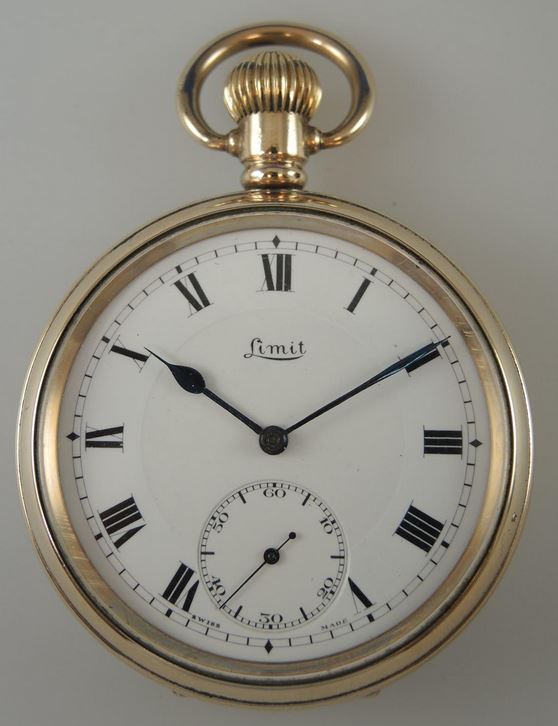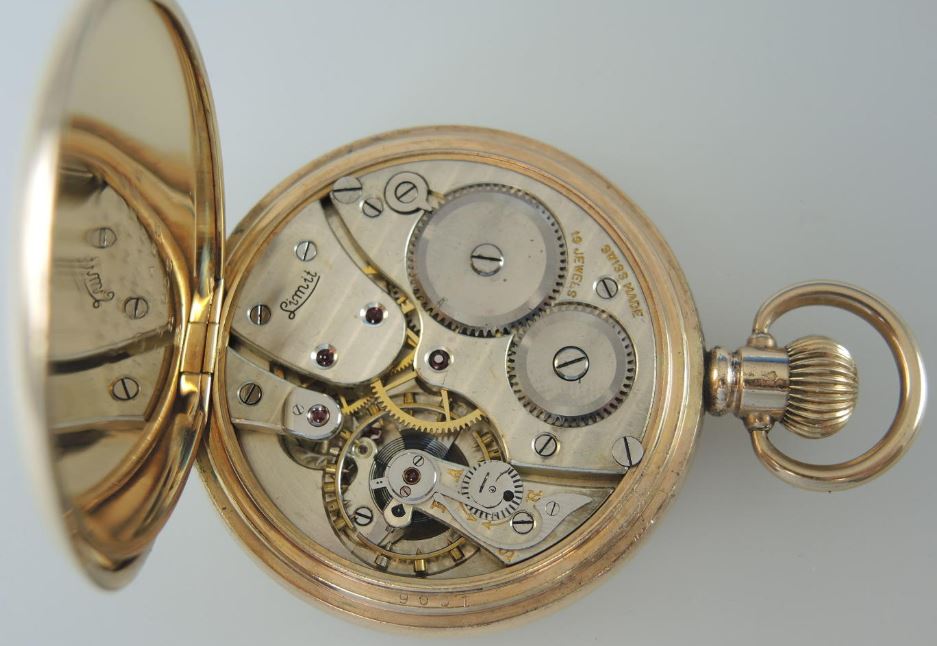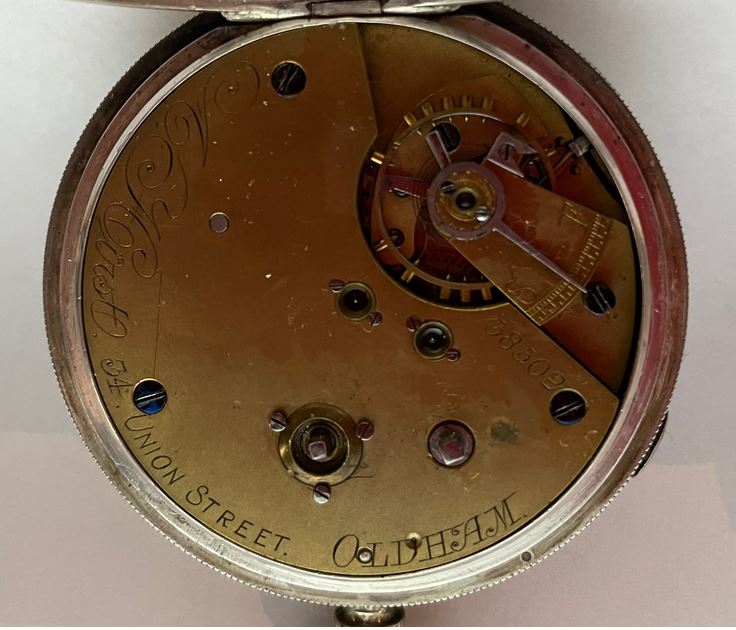In August 1884, Alfred Hirst (1863 – 1925) established Hirst Brothers on Union Street in Oldham. He had started his trade as a watch repairer and was self-described as a ’watchmaker extraordinaire’. The business was set up to produce timepieces, jewellery and precision machine tools for the watch and clock trade. He took his two step-brothers, Frank and Sam, into the business. It appears the business started out as a wholesaler of clocks, jewellery and watches, but eventually expanded into watchmaking. Hirst Brothers was not a manufacturer of components, their watchmaking would have been limited to assembly.
Business growth
By 1894 the business was expanding and the company moved to larger premises in Curzon Street, Oldham. In 1902, Hirst Brothers registered as a limited company (Hirst Brothers & Company Ltd) and they began the twentieth century with prospects of a very bright future. The company was expanding again in 1904, when they acquired a second business in Withy Grove, Manchester. The main office relocated to Roscoe Street, Oldham. In 1907 they acquired another business at Great Hampton Street in Birmingham. The nature of these acquisitions is not clear. Given the central locations of both addresses, it is likely that these were commercial premises rather than manufacturing.
According to the 1911 census, Alfred Hirst (age 48) was living at 61 Union Street, Oldham with his wife Sarah Ann Hirst (age 49 born Oldham), their three children and a servant. His occupation was listed as, Manager Wholesale Jewellers. He had lived all of his life in the area and had been born in the civil parish of Saddleworth, which lies just to the east of Oldham.
Limit brand
In 1912, Hirst Brothers registered the brand name ‘Limit’ for a range of pocket watches. However, there is evidence that the brand name Limit was in use by the Hirst Brothers before this time with some examples dated as early as 1908. Originally, the early Limit watches carried a Revue Thommen movement from the Waldenburg factory in Switzerland, which were shipped to the Oldham headquarters for assembly into British made cases from the Dennison Watch Case Company. The new range of Limit pocket watches boosted trade bringing more growth to the business. As a result, they opened additional sales offices in London, Birmingham and Glasgow.
The Limit range of pocket watches was fairly diverse. Invariably, the movement is stamped Limit, Swiss made. The quality of the movement varied, from basic seven jewel models to higher quality nineteen-jewel watches. The quality of the case material also varied with nickel, silver, gold plated and gold-filled options available. The dials were also typically stamped with the Limit tradename. It looks like Limit covered a fairly broad market from basic pocket watches to those of mid-market quality.
First World War
The outbreak of the First World War in 1914 impacted industries around the country. Hirst Brothers found themselves turning their attention from watch assembly to the manufacturing of aircraft parts, such as revolution counters and optical instruments. Additionally, the company had been tasked by the Royal Flying Corps to solve the problem of pilots dropping bombs by hand and they assisted in the development of the first bomb racks.
Before the war, a large part of the Hirst Brothers business involved the import of German clocks. When the war ended in 1918, a heavy import duty was levied on German goods, preventing Hirst Brothers from returning to business as usual. However, during the war, they had acquired significant manufacturing resources and skills. After the war, it was decided to utilise these newfound resources and skills by adding a clock manufacturing component to the business. To do this they decided to build a purpose-built factory.
The Hirst Brothers were ambitious and planned for further expansion of the business. They bought 7 acres of land to build a new factory with the capacity for a five-fold growth in business. The factory site was located in the Saddleworth Valley in Dobcross around seven miles east of Oldham. It was situated between a main road and the River Tame. The Greenfield train station was located about a mile to the south. The factory was to be designed by local Oldham architect, A.J. Howcroft. His brief for the design of the factory would have been prompted by Alfred Hirst who had visited modern factories in the United States. There he was inspired by the modern design providing as much daylight as possible during working hours.
Factory
Construction began in 1919. The original plans were very ambitious and were five times bigger than the factory that was eventually completed in 1920. The factory’s structure was built with reinforced concrete, a construction technique that was unusual at the time. It was a five-storey building with a total floor area of 54,000 sq ft and large windows to maximise daylight. A high-speed steam engine, coupled with a dynamo, provided the electricity supply. The site included tennis courts and a cricket field, with the staff competing in many of the local Lancashire and Yorkshire cricket leagues. The factory was named the Tame Side Works. By the early 1920s, the number of staff employed by the company had grown to over 500. The product range had expanded from just clocks and included watches, jewellery, tools and optical goods. There was also a repair department specialising in watches and clocks.
While the mill was being built prices had soared and Hirst Brothers needed to take a bridging loan from the District Bank. Production of Hirst Brothers clocks began in 1920. However, by the mid-1920s there was an ever-increasing supply of cheap imported clocks from Germany and the business needed to diversify. The production turned to radio sets and components as well as counters and gas meters. In 1926 the District Bank suffered a liquidity problem and they foreclosed on the Hirst Brothers loan. The company went into liquidation. The company survived after restructuring and continued to operate from the Roscoe Street address. However, Hirst Brothers was ultimately acquired by Time Products Limited in 1963.



